Clinton Roemer, Staedtler Mars Plastic Eraser, Judy Green Sheet Music
That’s my ‘upbringing’.
For a pretty large collection of folks, those words probably don’t mean anything. But, for a good number of folks (maybe age 40 and older), this is how you began.
A yellow legal pad. This idea represents so many things to me musically.
For many of my friends here in Nashville, this represents my hero, my mentor and my dear friend Lari Goss.
I moved to Nashville in January 1996 (20 years ago now) to intern with Lari. I spent many, many days in the studio looking at copies of Lari’s number charts he wrote on yellow legal pads.
In the last blog, I talked about general feels and grooves and singing the melodic lines as a horn player to see if it fits. Once I felt like I had a song that I felt would work and I had a general groove/vibe direction, I started working on creating a lead sheet. For me I start working on chords and when I figure out a section that feels good, I put it down on paper, usually on a legal pad or copy paper. Eventually the overall tune takes shape and I start working on a road map.
Every arrangement is different. Some songs I write out a number chart first. Others, I write out a chord chart. For some, I write it straight into Finale.
Side note: A number chart is what is called ‘The Nashville Number System’ and is a REALLY easy and quick way to chart things out. The general idea is that chords are assigned numbers, very much like the Roman numeral system you would have learned in music theory in college. In the Key of C, a C chord, would labeled ‘1’. An F chord, would be labeled 4. That’s it. If there’s an F# in the key of C, it’s often labeled 4# or #4. The benefit of using numbers when working on lead sheet ideas is I can mess around in different keys immediately. When I switch to B concert, a 4 chord is an E chord (4th scale degree).
AND…if you’re tracking a record with a guitar player and he decides he wants to use a capo, a number chart is an AWESOME thing for him.
When we tracked ‘There Is a Fountain’ for Retro Hymns 2, I had actually written a number chart that we tracked with.
I went ahead and wrote out the first part of the songs with chords in case you want to compare Numbers Vs. Chords. (REALLY EASY TO UNDERSTAND)
When working with singers, number charts work well because ANY singer can walk up, tell you the key, and you’re off and running. And it also works where they say, “Let’s do a mod (key change) and go back and do one more chorus.”
For Retro Hymns 2, I did something a little different than I’ve done in the past. Drum grooves really help me get into the vibe/feel of the tune. Because I do a good amount of composing and I work with virtual orchestra realizations a good bit, I’ve got EZ Drummer and Stylus that I use to help me get going with drums. And there are a lot of midi grooves out there you can buy and download. But for RH2, I went over to a dear friend, great drummer and a really easy to work with engineer’s studio (Tom Reeves-Westpark Creative Group). He’s got a midi drum system set-up that’s tweaked with his drum sounds, already eq’d like he likes them. So he and I talked through each song, listened to recordings that were in the general ballpark. And then he played an intro, verse and chorus section for each song (sometimes a bridge when we wanted). He recorded the midi and bounced an audio mix for each song. I brought that back to my studio and dropped it in to Digital Performer to mess around with and basically jam with. It worked GREAT!
As a REALLY behind the scenes sneak peak, here is a little bit of the drum patterns/grooves we had for There Is a Fountain. Keep in mind, all I was really looking for was a drum groove to play along with on the piano while working out the arrangement and road map. So, all you’re hearing here are the drums. And this does NOT match the number chart above. There are no stops and no hits (because I hadn’t written them yet). This is basically what we’d call part of a ‘work tape’.
There is a Fountain – Drum Ideas-01
I could have programmed drums myself. I could have gone and found a bunch of drum grooves. And I could have just imagined drums while playing the piano. But I have found that when I surround myself with wonderful musicians who ‘do their thing’, I am always inspired more than just working through it by myself.
Tom recorded the audio with his drums (heard above) but he also gave me the midi files. So when I dropped them into Digital Performer (DP), I could mess around with the tempo and even create a road map of the tune to play along with. As I said, it worked GREAT and I’m so glad I did it.
And, quite honestly, ANYTIME I can use live folks to help me create music, I love doing it.
So, I’ve got a song picked out. I’ve got a groove/direction. I’ve got a drum track that I’m playing along with to create the arrangement. I write out the chord or number chart. What’s next? I’m ready to record the rhythm section. That’s the next blog…


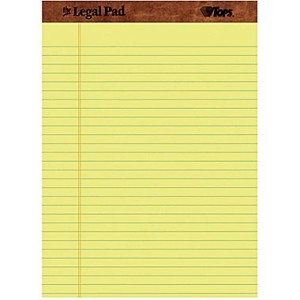
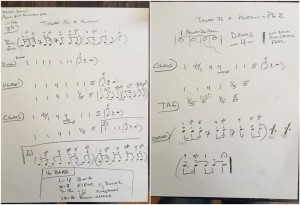
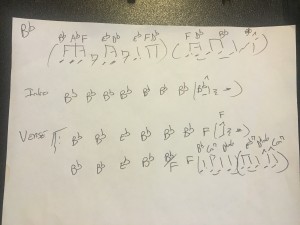

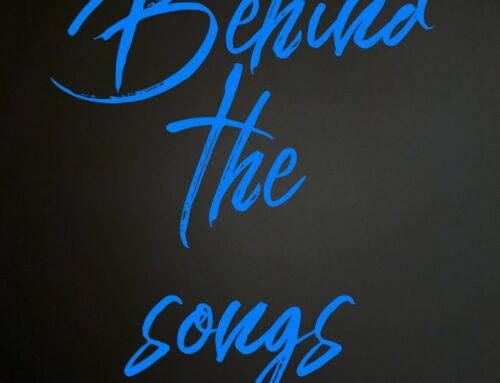
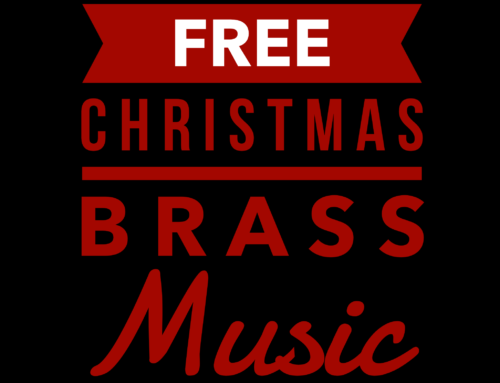
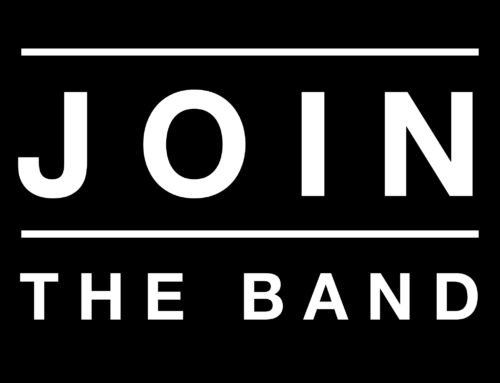
Leave A Comment